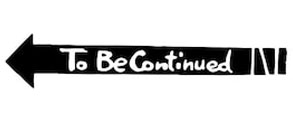At the beginning of this month Netflix released it’s second, and for me the most exciting, collection of Studio Ghibli films. However, hidden amongst the vast amount of high-profile anime appearing on Netflix a ‘menacing’ presence was also felt as well as a strong sense of excitement. This could mean only one thing; JoJo’s Bizarre Adventure had arrived.
Written and illustrated by Hirohiko Araki in 1987, JoJo’s Bizarre Adventure started off as a manga published in Weekly Shōnen Jump and was later moved to the monthly seinen manga magazine Ultra Jump in 2005. There were a couple of anime adaptations of JoJo’s Bizarre Adventure previously, but the most well known is the version produced by David Production, which was announced by Hirohiko Araki on the 25th anniversary of JoJo’s Bizarre Adventure in 2012. So far, they have animated five out of eight parts of the manga.
Netflix have released the first three parts of JoJo’s Bizarre Adventure. Part one: Phantom Blood (9 episodes), Part two: Battle Tendency (17 episodes) and Part three: Stardust Crusaders (48 episodes).
I’ve been an avid JoJo’s fan for a few years now and I can tell you that once you’ve become a fan, there is no going back. Whilst most shonen/seinen manga and anime can be similar in their themes and character types, JoJo’s Bizarre Adventure completely twists this around. The character design in JoJo’s was influenced by 80s films such as Conan the Barbarian (Milius, 1982) and Rambo: First Blood (Kotcheff, 1982) which explains why the characters in parts one to three are so enormous in size. The characters are often named after music bands, songs or artists inspired by Araki’s personal tastes. However, as I said there is a twist, these muscle-bound characters stand in ridiculous poses, have quite feminine physical characteristics, such as long eyelashes, and often have interesting character flaws such as Joseph Joestar’s special move ‘Run Away!’.
Even though JoJo’s Bizarre Adventure is incredibly written, drawn and animated, a large part of the reason that it has grown in popularity is due to its fan base. The fan base comes in three parts. First of all, like any anime you enjoy, you tell your friends about it. However, JoJo’s Bizarre Adventure fans take it slightly further by preaching about the wonder of JoJo’s to groups of people and basically anyone else that will listen. Eventually a couple from each group will take note, watch it and then they will also take part in the crusade of spreading the word about JoJo’s and thus the cycle continues.
Secondly referencing. JoJo’s Bizarre Adventure is very unique in design and because of this the fans have created what they call a JoJo’s reference. This means that whenever they see something that could possibly be related to JoJo’s they will scream, no matter where they are, “Is that a JoJo’s reference?” Some examples of this are when people stand in dynamic, but often awkward poses, which is a signature style of JoJo’s. Even just the words “Good grief” can be seen as a reference, as this is Jotaro Kujo’s (Part three) catchphrase.
Finally, the third part is memes. Anything can become a meme and for JoJo’s Bizarre Adventure it primarily started with the ‘To Be Continued’ arrow that is featured at the end of each animated episode. Anything which ends with a cliff-hanger can easily be associated with the meme. YouTuber’s started making edits of extreme situations that had been caught on video and pausing the footage before something dramatic is about to happen, and adding the To Be Continued arrow at the bottom of the screen. There are so many other memes associated with JoJo’s, far too many to mention here. JoJo’s memes even happen in other anime series such as Pokémon (1997), Mob Psycho 100 (2016) and Naruto (2002).

Hirohiko Araki certainly likes to challenge what is normal for manga and anime. The storylines for JoJo’s Bizarre Adventure are certainly not normal and are quite literally bizarre at times. Both the manga and anime are amazing and I find myself questioning how Araki ever came up with such creative ideas. There is much I’d like to say about the creative spirit that is Hirohiko Araki but I’ll save that for another blog. Besides the story and characters, what’s refreshing about JoJo’s Bizarre Adventure is that it celebrates both masculinity and femininity. Yes, there are big fight scenes but there are also sensitive moments where characters develop relationships and ‘bromances’. Araki has never been scared to explore these themes even when they were written at a time when such relationships weren’t as accepted.
The only way to truly understand what I am talking about is to take the plunge and get stuck into it. For years it’s been difficult to source JoJo’s Bizarre Adventure and watch it in the UK, but now it is here and ready to be watched. Enjoy everybody.
JoJo’s Bizarre Adventure manga is rated OT (Older Teen) and the anime is rated age 15.
Published: 2019.03.06

